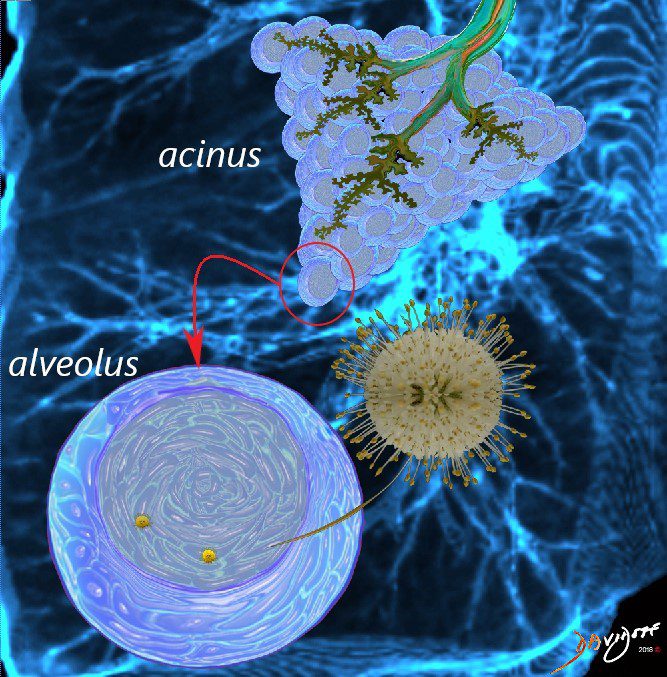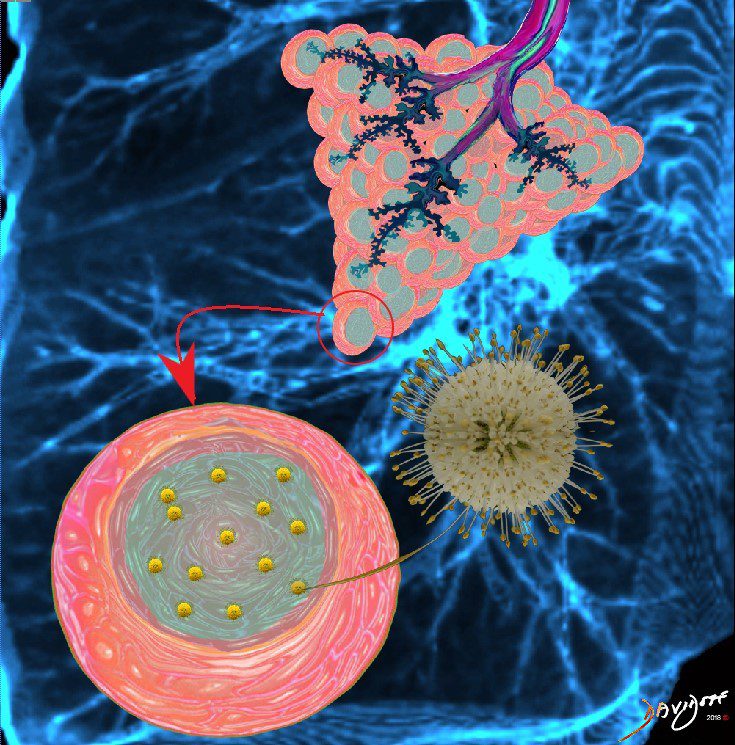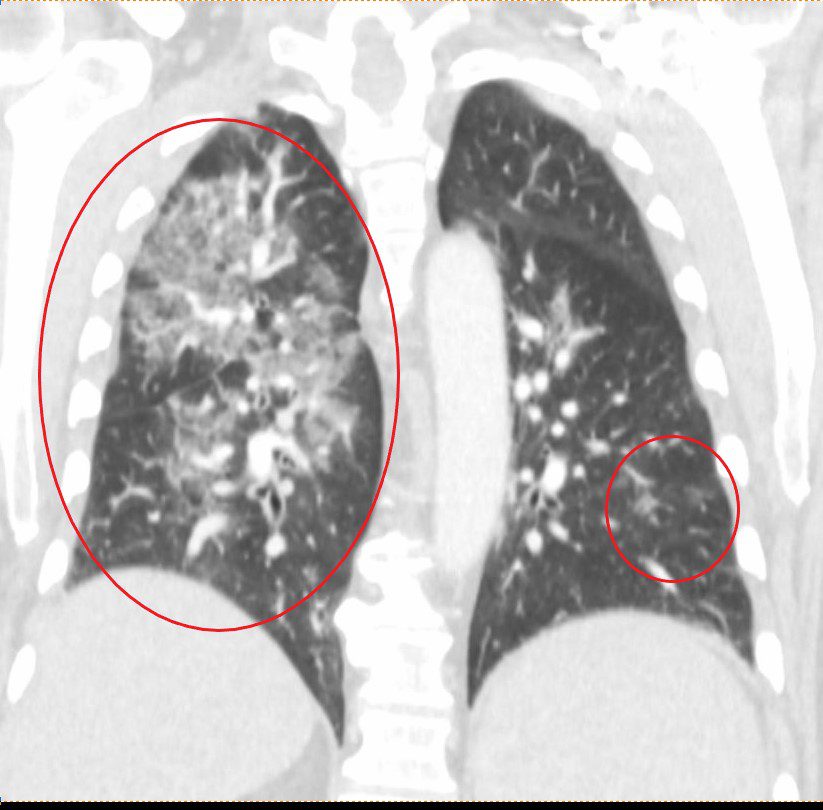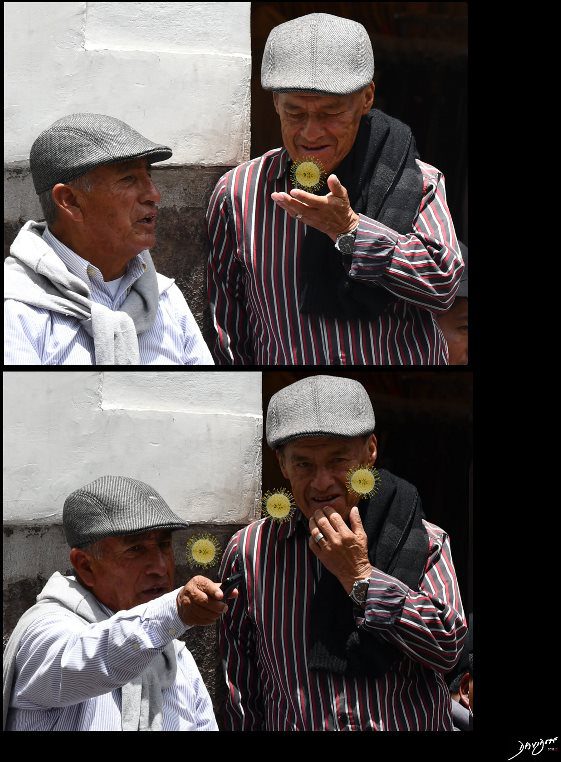The Virus

The Bat – A Common Carrier

Image of the bat – courtesy Oren Peles
Wet Market – Source of Infected Animals

Contact and Contamination

Man buys meat at the wet market and corona virus spreads to his hands during the purchase or during food preparation.
Inhalation

His hands go to his mouth and he inhales the virus. The virus does not proliferate if it is ingested, only if inhaled.
Inhalation and Travel through the Airways

The virus enters the lungs and travels to the smallest parts of the lungs, tiny lung sacs called the alveoli where oxygen exchange takes place
Destination is the Alveolus and Alveoli

Corona virus invades the cells of the alveoli by using its spike glycoproteins. These spike proteins attach to the cell membrane and the virus can then enter the cell.
Invasion, Replication, and the Inflammatory Response

The virus replicates and invades more cells of the alveoli
As COVID-19 causes inflammation of the the lungs, infected fluid fills the lungs thus disrupting gas exchange.
Early Changes in the Small Segments of the Lung

The infection starts in small basal segments

It spreads to both lungs
Progressive Disease Involving Larger Segments

and progresses to involve more and more lung

Advancing infection involves more lung and prevents efficient and effective gas exchange (inhalation of oxygen and expiration of carbon dioxide). When this exchange is not possible, a ventilator is necessary

